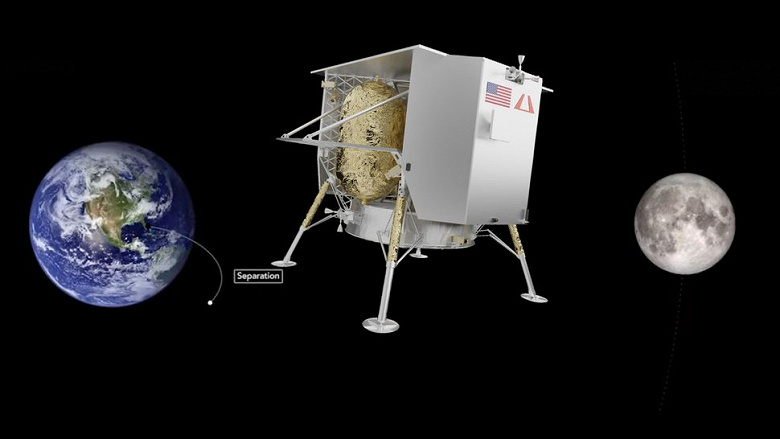After a successful launch, the first private lunar lander encountered unexpected difficulties
After the historic launch of the Vulcan rocket, the private lunar lander Peregrine encountered an anomaly, Astrobotic reports. The company is responding to events in real time and plans to provide updates as new data becomes available and analyzed.
The Astrobotic Peregrine mission began with the successful insertion into an elliptical orbit by United Launch Alliance's (ULA) Vulcan Centaur rocket in the pre-dawn hours today (08 January). This is the first flight of the new launch vehicle, and the Peregrine lander could become the first private spacecraft to successfully reach the lunar surface.
However, shortly after the start of the flight, an anomaly arose that could disrupt the progress of the mission. Astrobotic reported that the lander was unable to stabilize its position relative to the Sun due to instability of the propulsion system.
Peregrine carries a variety of commercial and scientific cargo. NASA has contracted Astrobotic to conduct five scientific experiments, including studies of the lunar surface, atmosphere and radiation environment. In addition, Peregrine is home to robots from Mexico, as well as a lunar nano-rover created by students at Carnegie Mellon University. Also on board are a fragment of Everest, human DNA and remains provided by Celestis and Elysium Space as part of the space memorial programs. And other non-scientific commercial cargo, such as lunar bitcoin, an archive of miniature books, and messages from people around the world.
The main problem the Peregrine faces is with its battery life. To generate energy for the ship's systems, it is necessary to point solar panels at the Sun. However, due to an anomaly with the propulsion system, the spacecraft was unable to stabilize its position, and the battery reached a low charge level.
The Astrobotic team is trying to fix the problem and restore service. They carried out an impromptu maneuver to reorient the solar panels towards the Sun and thus increase the battery charge. As long as the resulting anomaly poses a threat to the mission, Astrobotic will continue to work to resolve the problem. If the spacecraft can be restored and stabilized, Peregrine will be able to successfully reach the lunar surface.
To reach the Moon, Peregrine has already flown around the Earth to correct course and enter the trajectory of a high elliptical lunar orbit. If it successfully reaches the Moon, it will descend and circle its orbit at an altitude of about 100 kilometers before beginning its descent to the south pole region of the lunar surface on February 23.
While Peregrine faces problems, ULA's Vulcan Centaur rocket continues to successfully complete its maiden flight.

